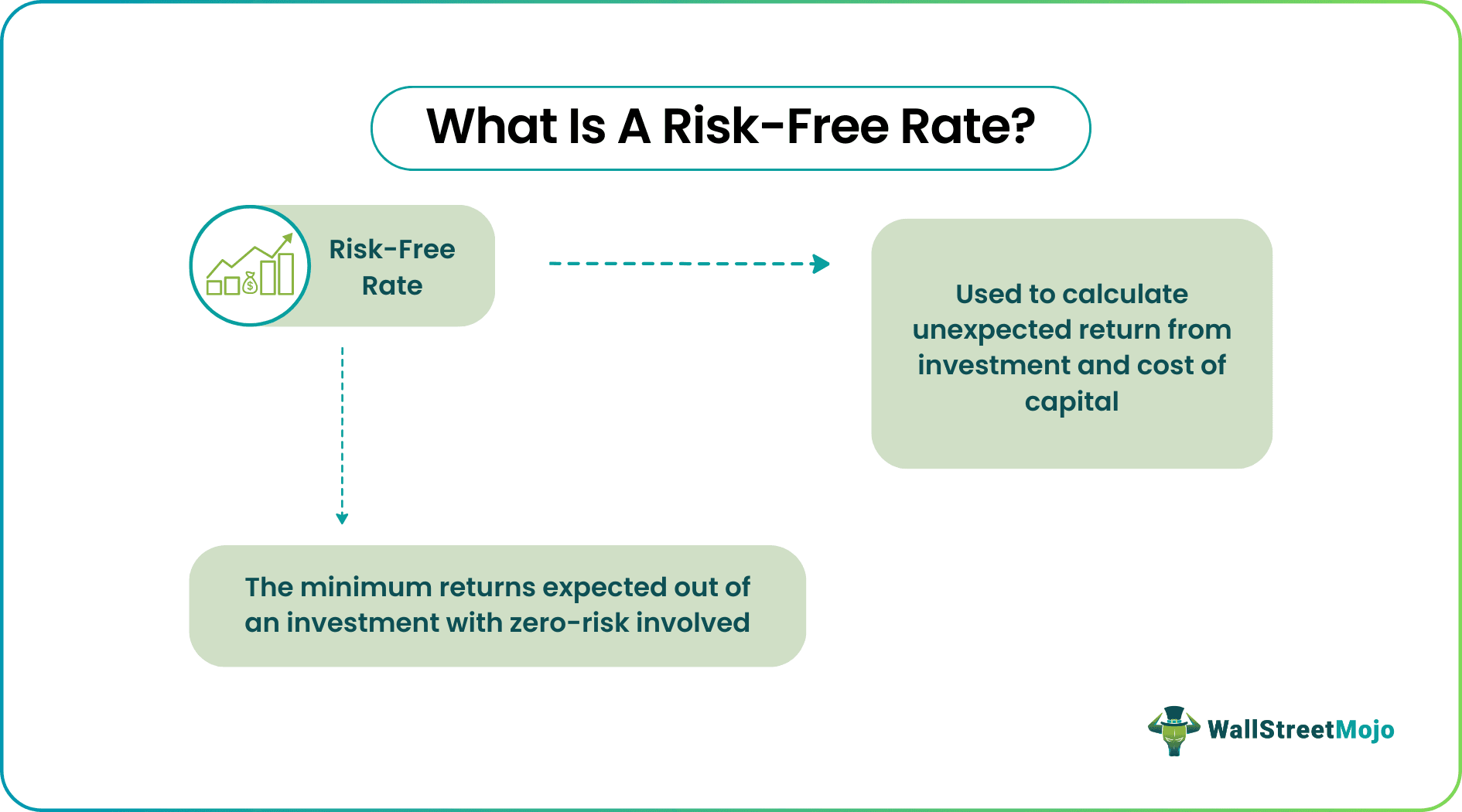Table Of Contents
What Is A Risk-Free Rate?
A risk-free rate is the minimum rate of return expected on investment with zero risks by the investor. It is the hypothetical rate of return; in practice, it does not exist because every investment has a certain amount of risk.

These returns may be true for the government bonds of well-developed countries, like US treasury bonds or German government bonds. A risk-free rate is an important input in the Capital Asset Pricing Model (CAPM), which is the model used to determine the rate of return on investment with respect to the systematic risk associated with it.
Risk-Free Rate Explained
A risk-free rate is a return an investor can expect from an investment, given the risk associated is zero. Though it seems to be an effective concept, there is no investment that has no risk involved. Every investment option has a certain level of risk associated that may be minor or major.
A risk-free rate is used to calculate the expected rate of return on investment. US treasury bills, for example, are considered risk-free assets or investments as the US government fully backs them. There are three elements that can easily be studied depending on the risk-free rate. These include:

- Inflation:- The expected rate of inflation over the term of the risk-free investment;
- Rental Rate:- It is the real return over the investment period for lending the funds.
- Maturity risk or Investment risk: It is the risk related to the investment’s principal market value, i.e., it can be a rise or fall during the period to maturity as a function of changes in the general level of interest rates.

While calculating the cost of equity using CAPM, a Risk-free rate is used, influencing a business weighted average price of capital. Calculation of the capital cost takes place using the Capital Asset Pricing Model (CAPM).

Image Source: Financial Modeling And Valuation Course Bundle
CAPM describes the relationship between systematic risk and expected return. It determines the fairest price for the investment based on risk, potential returns & other factors.
Formula
The formula that uses a risk-free rate to calculate the expected return has been mentioned below:
ra = rrf + Ba (rm-rrf)
Where,
- rrf = the rate of return for a risk-free security
- rm = the broad market’s expected rate of return
- re = the expected return to be calculated for an investment
- Ba= Beta
Examples
Let us consider the following examples to understand the risk-free rate meaning better:
Example 1 - US Treasury Bills
T bills are the short term obligation issued by the US Government. These are issued for one year or less than a year. These are the safest investment as they are backed by the US government. T bills carry a zero default risk as they are fully guaranteed and credit by the US government and the Treasury Department.
Funds generated from selling Treasury bills, the government uses those funds for various public projects such as highways & schools. There are so many factors that influence treasury bills prices like monetary policy, macroeconomic conditions, and supply& demand for the treasury. Longer treasury bills tend to have higher returns, but normally T bill's maturity normally lies between few days to 12 months.
Example 2 - Calculation
Most of the time, the calculation of the risk-free rate of return depends on the period under evaluation. Suppose the period is for one year or less than one year, then one should go for the most comparable government security, i.e., Treasury Bills. For example, if the treasury bill quote is .389, the risk-free rate is .39%.
If the time duration is in between one year to 10 years, then one should look for Treasury Note. For Example: If the Treasury note quote is .704, then the calculation of the risk-free rate will be 0.7%
Suppose the period is more than one year than one should go for Treasury Bond. For example, if the current quote is 7.09, then the risk-free rate of return calculation would be 7.09%.
Example 3 - CAPM
If the risk-free rate is 7%, the market return is 12%, and the stock’s beta is 2, then the expected return on the stock would be:
Re = 7% + 2 (12% – 7%) = 17%
In the above CAPM example, the risk-free rate is 7%, and the market return is 12%, so the risk premium is 5% (12%-7%), and the expected return is 17%. The capital asset pricing model helps calculate the required rate of return on equity based on how risky that investment is compared to risk-free.

